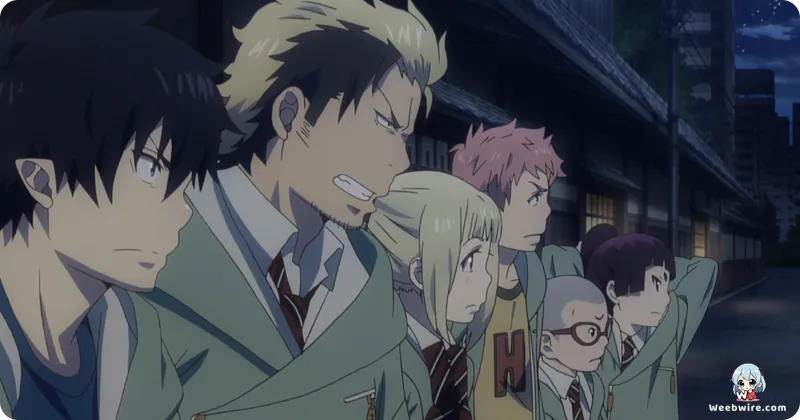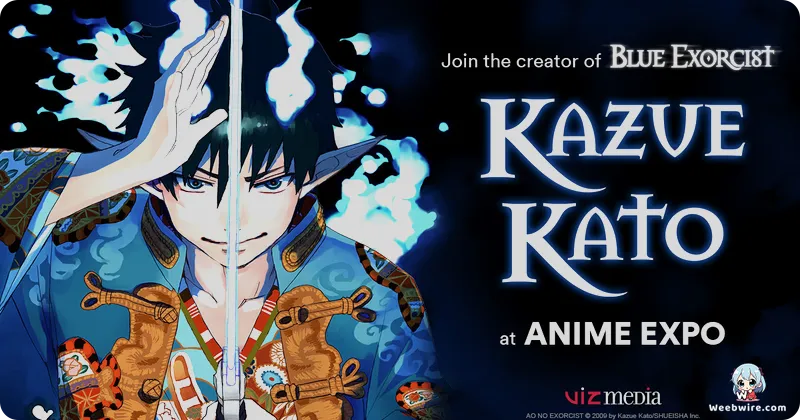Ao no Exorcist: Kyoto Impure King Arc OVA — Unearthing Canon Restoration and Deep Character Secrets

For enthusiasts of supernatural action and richly layered narratives, the Ao no Exorcist series consistently delivers. Its Kyoto Fujouou-hen OVA (Kyoto Impure King Arc) emerges as a particularly crucial and captivating chapter. While the franchise is widely celebrated for the fiery exploits of Rin Okumura, the son of Satan, and his relentless battles against demonic forces, this specific OVA holds significant, often overlooked, details that profoundly enhance its appreciation and underscore the masterful depth of Kazue Kato's original manga.
Harmonizing with the Manga
One of the most paramount and perhaps ingenious aspects of the Kyoto Fujouou-hen OVA lies in its strategic role in harmonizing the anime’s trajectory with its manga source material. The initial season of the Ao no Exorcist anime, despite its widespread acclaim, eventually veered off-course, culminating in an anime-exclusive ending. This creative divergence left many dedicated manga readers questioning the path of future adaptations.
The Kyoto Fujouou-hen OVA ingeniously served as a direct continuation and a subtle yet effective 'retcon,' artfully disregarding the first season's original conclusion to seamlessly resume the narrative precisely where the manga’s storyline had progressed. This pivotal decision allowed the anime to faithfully adapt one of the manga's most cherished and narratively critical arcs, much to the immense satisfaction of long-standing fans who had earnestly yearned for a true-to-source continuation. It stands as a powerful testament to the production's unwavering commitment to the original vision, facilitating an uncommon, yet perfectly smooth, transition back into the established canon for an anime series that had previously ventured into original content.
Deepening Character Arcs and World-Building
Beyond its structural ingenuity, the Kyoto Fujouou-hen arc is a veritable treasure trove of profound character development and intricate world-building subtleties.
Yukio's Hidden Burden
A lesser-known, yet profoundly significant detail pertains to Yukio Okumura, Rin’s younger twin brother, specifically the insidious deterioration of his eyesight. Throughout the series, and particularly accentuated during high-stakes moments within this arc, Yukio’s vision periodically blurs, or he experiences noticeable discomfort, often rubbing his eyes. This is far from a mere physical affliction; it serves as a subtle yet potent foreshadowing of his own dormant demonic powers and the immense, internal pressure he endures from continuously suppressing them. In stark contrast to Rin, whose demonic lineage manifests overtly through his iconic blue flames, Yukio's connection to Satan is far more insidious and internal, gradually eroding his physical well-being. This poignant detail adds rich layers to his character, vividly portraying his silent suffering and the colossal burden he carries, often overshadowed by Rin's more outwardly explosive struggles.
The Enigmatic Mephisto Pheles
Furthermore, the enigmatic figure of Mephisto Pheles, the eccentric principal of True Cross Academy and one of the formidable Demon Kings, consistently provides intriguing insights. His true identity as Samael, the King of Time, grants him the extraordinary ability to manipulate time and space, rendering him an exceptionally powerful, albeit frequently unpredictable, ally. A captivating facet of Mephisto's persona is his seemingly whimsical and theatrical demeanor, which frequently masks his deeper, more intricate motivations. He often engages in clever fourth-wall breaks, delivering meta-references, and his profound affection for human culture, especially toys and games, is genuinely endearing. While his actions frequently appear driven by personal amusement, beneath this playful facade lies a profound comprehension of the delicate equilibrium between the human and demonic realms, alongside a long-term strategic agenda that largely remains shrouded in mystery. His blend of playful charm and calculating intellect positions him as one of the most unpredictable and compelling characters in the series, perpetually keeping viewers in suspense regarding his true allegiances and ultimate objectives.

Themes of Prejudice and Acceptance
The Kyoto Fujouou-hen arc also delves deeply into compelling themes of prejudice and acceptance, particularly illuminated through the perspectives of the Myodha sect and its esteemed leader, Tatsuma Suguro, father to Ryuji 'Bon' Suguro. This arc compels Rin to confront the deeply ingrained fear and animosity that humanity harbors towards demons, even when those demons, like himself, are earnestly striving for good. This arduous quest for acceptance, even from his closest comrades, forms the profound emotional bedrock of the OVA.
A-1 Pictures' Masterful Adaptation
The renowned animation studio, A-1 Pictures, celebrated for its dynamic action sequences and exquisitely expressive character designs, masterfully brought Kazue Kato’s intricate artwork to vivid life within this arc. They meticulously reconstructed the detailed settings of Kyoto and the nuanced expressions of the characters, ensuring that every frame effectively conveyed the emotional intensity and thrilling combat for which Ao no Exorcist is justly celebrated. The visual narrative during Rin's climactic confrontation with the Impure King and the subsequent, pivotal revelations about his past were executed with particular brilliance, underscoring the studio's unparalleled mastery in transforming complex manga panels into breathtaking, fluid animation.
The triumphant return to the manga’s established canon with Kyoto Fujouou-hen OVA transcended a mere technical correction; it represented a powerful reaffirmation of the series’ fundamental identity. It empowered the anime to thoroughly explore the rich tapestry of its characters, their internal struggles, and the intricate lore meticulously crafted by Kazue Kato, free from the constraints of prior anime-original plotlines. This unwavering commitment to the source material ensured that the character arcs, particularly Rin’s journey of self-acceptance and Yukio’s hidden burdens, resonated deeply and authentically with the audience, firmly establishing the Kyoto Fujouou-hen OVA as a cherished and indispensable chapter for any devoted fan of Ao no Exorcist. It stands as a profound testament to the series’ enduring allure and the thoughtful, strategic decisions made to honor its original vision, ultimately delivering a truly fulfilling and captivating narrative experience.
Credits
Ao no Exorcist: Kyoto Fujouou-hen OVA
Author
Kazue Kato
Cover Art
Kazue Kato
Studio
A-1 Pictures
Publisher
Shueisha
Producers





